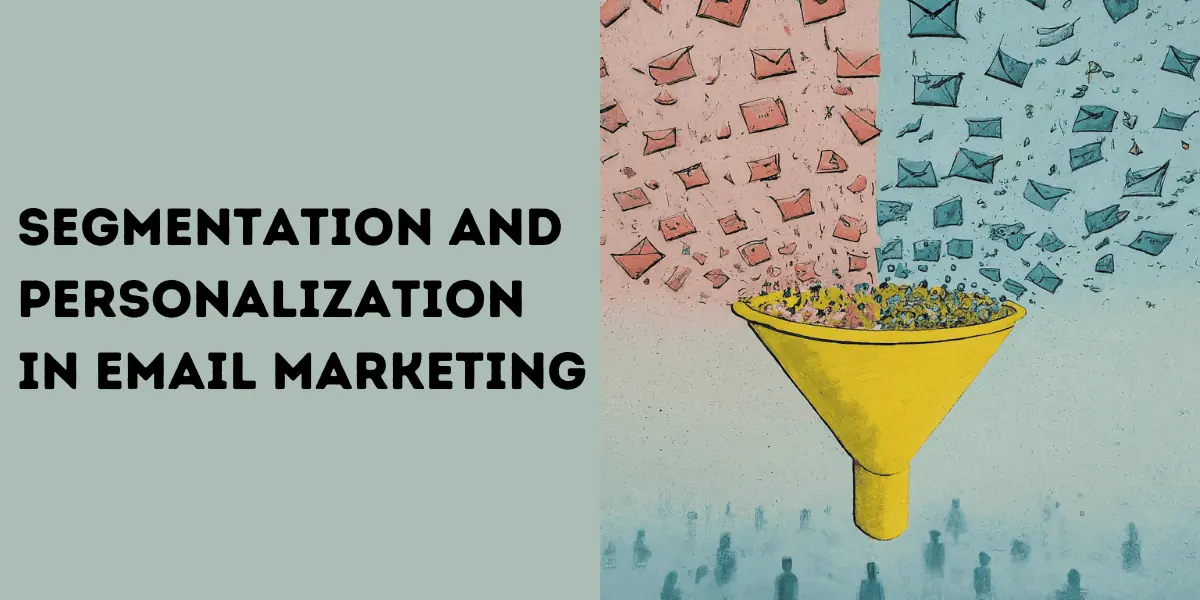
The twin pillars of segmentation and personalization have emerged as indispensable tools for building meaningful connections with your audience. Beyond the one-size-fits-all approach, savvy marketers recognize the importance of tailoring content to specific segments of their audience, thereby enhancing engagement and driving conversion rates.
Let’s the pivotal role of audience segmentation and personalization in email marketing, unraveling the strategies and best practices that can elevate your campaigns to new heights.
The Dynamic Duo: Segmentation and Personalization Defined
Segmentation: At its core, segmentation involves dividing your email list into distinct groups based on shared characteristics or behaviors. These groups, or segments, could be formed around demographics, purchase history, geographic location, or engagement levels. This strategic division allows marketers to send targeted messages that resonate with the unique needs and preferences of each segment.
Personalization: Personalization, on the other hand, takes the customization one step further by tailoring the content of your emails to individual recipients within a segment. This goes beyond addressing the recipient by name; it involves crafting content that directly speaks to their interests, challenges, and preferences. Personalization creates a sense of individualized communication, fostering a stronger connection between the brand and the recipient.
- Protip: Improve your segmentation and personalization game by using free email lead generation software,
- GetEmail.io. It doesn’t just help you find email connections on various platforms, but it also helps you improve your email deliverability rate.
The Impact of Segmentation and Personalization on Email Marketing:
-
Increased Relevance:
- Segmentation ensures that your messages are relevant to specific audience segments, addressing their unique pain points and interests.
- Personalization takes relevance to the next level by delivering content that is specifically tailored to an individual’s preferences and behaviors.
-
Higher Engagement Rates:
- Targeted content resonates more strongly with recipients, leading to higher open and click-through rates.
- Personalized emails are more likely to capture the attention of recipients, as they feel a deeper connection with content that directly relates to their needs.
-
Improved Conversion Rates:
- By delivering content that speaks directly to the needs and interests of a segment, you increase the likelihood of converting leads into customers.
- Personalization enhances the user experience, making it more likely that recipients will take the desired action, whether it’s making a purchase or filling out a form.
Best Practices for Segmentation and Personalization:
-
Demographic Segmentation:
- Grouping subscribers based on demographics such as age, gender, or job title.
- Example: A clothing retailer sending different promotions to male and female customers.
-
Behavioral Segmentation:
- Segmentation based on user behavior, such as past purchases, website interactions, or email engagement.
- Example: An e-commerce platform sending personalized recommendations based on previous purchases.
-
Geographic Segmentation:
- Targeting subscribers based on their geographic location.
- Example: A travel agency offering specific vacation packages to subscribers in different regions.
-
Lifecycle Stage Segmentation:
- Grouping subscribers based on where they are in the customer journey (e.g., leads, first-time customers, loyal customers).
- Example: An online course provider sending targeted content to new subscribers versus long-term customers.
Conclusion: Elevating Email Marketing through Precision and Personalization
In the dynamic world of email marketing, segmentation and personalization stand as the linchpins for success. By dividing your audience into meaningful segments and tailoring content to meet individual needs, you can create a more engaging and personalized experience for your subscribers.
These strategies and best practices help to elevate your email marketing campaigns, forging stronger connections and driving impressive results in the ever-evolving world of digital communication.


